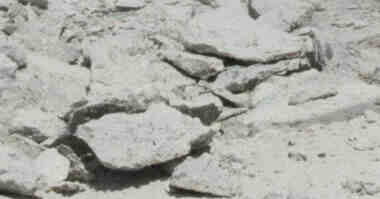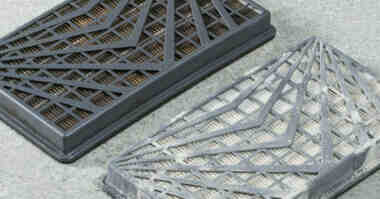
Silicosis is a preventable lung disease, a type of pulmonary fibrosis, caused by breathing in tiny bits of Silica, a common mineral found in sand, quartz and many other types of rocks.
Back to Articles & Resources View all General Respiratory Protection content
It often takes years for symptoms to show, with sufferers vulnerable to developing diseases like tuberculosis, lung cancer, COPD, and kidney disease, which can lead to death.
Pain and suffering are the reality for millions of workers who drill, cut, crush, or grind silica-containing materials. Many industries are affected, including construction, mining, oil and gas extraction, stone countertop, dentistry, foundries, and other manufacturing workplaces. Some industries have been hard hit, like pottery workers, with a recent study finding rates of silicosis as high as up to 20% among workers with an average exposure of 0.2 mg/m3 over many years. China reported 24,000 annual silicosis-related deaths between 1991 and 1995 while the UK each year has around 4000 deaths due to COPD resulting from past workplace exposures, including silicosis. No wonder doctors are calling silicosis the worst workplace lung disease since asbestos.
Silicosis is nothing new, it's considered the oldest known occupational lung disease, even leading to a public service film by the US Department of Labor in 1938 called Stop Silicosis. Despite its history, many manufacturers across the US continue to knowingly subject their employees to the dangers of Silica. In 2018, it was estimated that 96,366 fabrication workers at 8,694 sites across America were at risk of developing silicosis. In early 2019, the California Department of Public Health inspected 106 workplaces and found over-exposures in 47 of them, issuing 523 citations.
By law, employers have a duty of care to employees and might have to pay compensation to affected workers, ranging anywhere from $500,000 US to $2,000,000 US. So, what can be done to prevent silicosis? It’s vital for companies to define and implement a plan against silica exposure and to offer employees medical exams. Good practice includes using water to wet the dust before it gets into the air or using a vacuum to remove the dust from its origin point. All workers should have respiratory protection, whether it's a loose-fitting device like the Z-Link or tight-fitting respirators like the Elipse P100/P3 and Integra P3/P100.
Sadly, there is a perception that proper protection is expensive, but inaction can be far more costly.
The Z-Link provides you with versatile protection, perfect for use across multiple applications.
Learn MoreRelated Articles

The Dangers of Respirable Silica
Crystalline silica is present in many construction materials. It becomes respirable when these materials are cut or broken down into fine particles.
Read article
Is Workplace Compliance Enough?
We place our trust in regulatory bodies to create safety work standards. Over time, for the most part, these standards have evolved.
Read article
Crystalline Silica: What does it mean for you?
More than 85% of workers exposed to respirable crystalline silica work in the construction industry - totaling over 2.3 million workers.
Download whitepaper